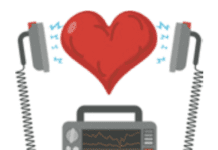When most of us think about having an angioplasty, we think of a catheter being inserted in the femoral artery in the groin and snaking its way up to the heart, where a balloon and/or stent is implanted. But another method, which is quickly gaining popularity in Europe and more slowly here, is transradial angioplasty-the practice of inserting the catheter in the wrist. "Angioplasty using radial artery access (located in the wrist just below the thumb) has increasingly been used at Cleveland Clinic and some other institutions. The major advantages are that the artery runs just under the skin and above the bone, making it very easy to compress after the procedure," says Stephen Ellis, MD, section head of Invasive/Interventional Cardiology and director of the Sones Cardiac Catheterization Laboratory at Cleveland Clinic. "The result is a 70 to 80 percent reduction in the risk of bleeding associated with coronary interventions. Radial artery access also allows almost immediate patient ambulation."
To continue reading this article or issue you must be a paid subscriber.
Sign in





